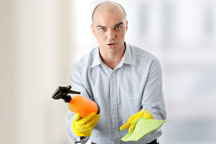 People often ask us which ingredients are the “bad onesâ€. For those without an extensive knowledge of chemistry or biology, this is often very difficult to figure out. Most people just assume that if it were “really that bad†the government, the manufacturer, the retail store, or someone along the line would tell you. In fact, that is not the case. Many products are extremely dangerous and have nothing more than a little bit of highly technical fine print to tell you what it contains.
People often ask us which ingredients are the “bad onesâ€. For those without an extensive knowledge of chemistry or biology, this is often very difficult to figure out. Most people just assume that if it were “really that bad†the government, the manufacturer, the retail store, or someone along the line would tell you. In fact, that is not the case. Many products are extremely dangerous and have nothing more than a little bit of highly technical fine print to tell you what it contains.
According to a 2006 study by the University of California Berkeley and Lawrence Berkeley National Laboratory, ethylene-based glycol, classified as a hazardous air pollutant by the U.S. Environmental Protection Agency (EPA), was found to be used commonly as a water-soluble solvent in cleaning agents.
Terpenes, a class of chemicals found in lemon, pine and orange oils can morph into carcinogenic compounds when they mix with ground-level ozone.
Also, chlorine, often labeled as “sodium hypochlorite†or “hypochlorite,†is almost ubiquitous in household cleaners. Breathing in its fumes can irritate the lungs, and poses a serious health risk to those with heart or respiratory issues.
According to the non-profit Cancer Prevention Coalition, some other problematic chemicals found in many household cleaners include butyl cellosolve, which has been linked to kidney and liver problems and is reportedly toxic to forming cells.
Mostly household cleaners are filled with petrochemical solvents designed to dissolve dirt. No law requires cleaning product manufacturers to list ingredients on their labels or to even test their products for safety. They leave it up to consumers to make sure their homes are not only clean, but also non-toxic.
A much easier way to ensure that your cleaning products contain no toxic, dangerous, harsh chemicals is to use eco-friendly cleaning products developed RPS Environmental Solutions, LP.



